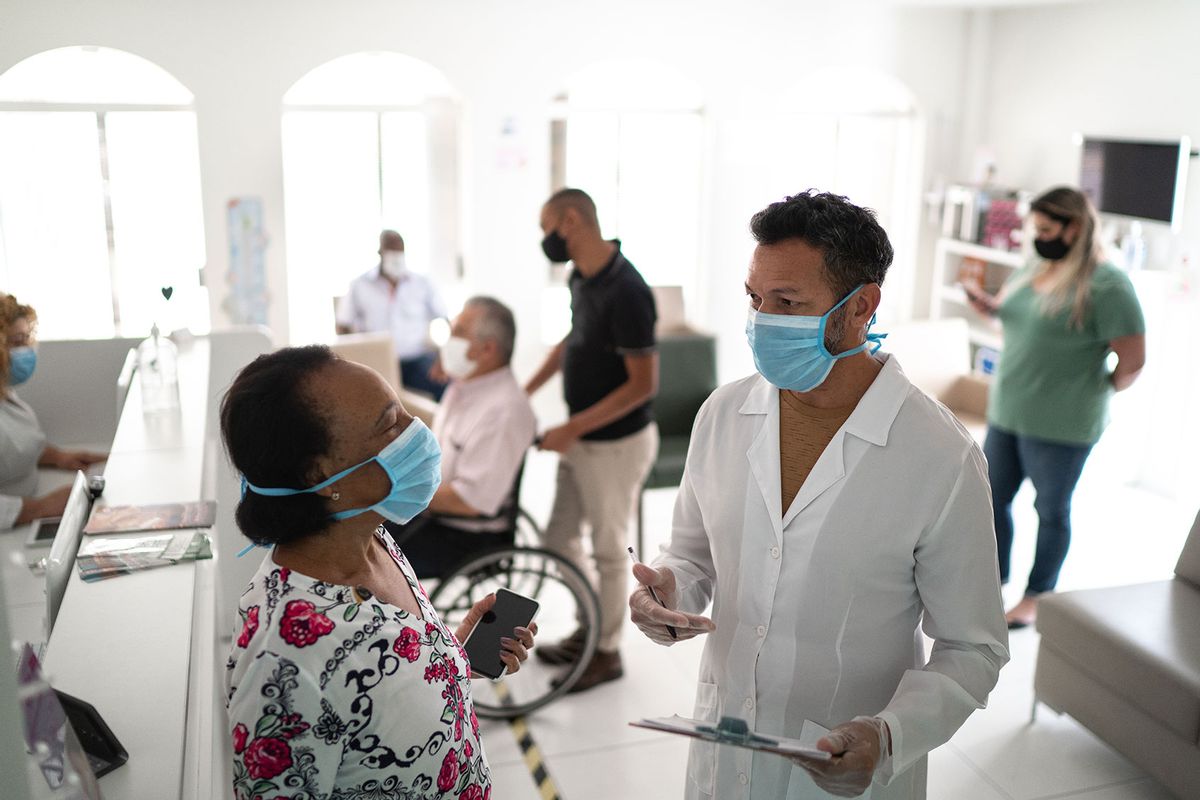In the hit HBO series "The Last of Us," humanity must battle a malevolent fungus that arises due to climate change and turns people into zombies. While "The Last of Us" is a science fiction thriller and its fungus could actually save the world rather than destroy it, the notion that climate change might cause pandemics or epidemics is hardly limited to fiction. Last month, it was discovered that a flesh-eating bacteria known as vibrio vulnificus is infecting eight times as many people now as it did 30 years ago (from 10 patients annually to 80), a fact made alarming because the disease is fatal to as many as 1 in 5 of the infected. The likely culprit of the jump in infections? The warming ocean due to climate change.
"Tick-borne diseases are less straightforwardly climate-driven... but that is all on the move with climate change too, and is reflected in studies of climate and tick borne diseases."
As it turns out, the COVID-19 pandemic may be just the beginning of our species reckoning with waves of deadly diseases. Yet while there is no evidence that COVID-19 was linked to humanity's ongoing problem of excessive greenhouse gas emissions, the same cannot be said of some of these other nasty pathogens that may be lurking in our collective future if global warming continues to run amok. These are but a few of the most notable known pathogens, diseases and conditions that will become more common as the Earth warms. There may well be others that are yet unknown to science, such as SARS-CoV-2 was — a virus that also may have jumped from animals to humans for reasons related to climate change.
When Salon reached out to Dr. Jeff Harvey about climate change and pandemics, the special professor of biological conservation and advocacy at the Free University in Amsterdam warned of "various insect-transmitted pathogens found on tropical ecosystems such as malaria, dengue fever, leishmaniasis etc." The reason is simple: Many of the climate change conditions that will kill humans in droves are positively heavenly for mosquitoes, such as the increased heat and constant movements of large animal populations.
The first of the mosquito-diseases listed by Harvey, malaria, is described by the Centers for Disease Control and Prevention (CDC) as causing "high fevers, shaking chills, and flu-like illness." This mosquito-borne ailment is carried by parasites like Plasmodium falciparum, P. vivax, P. ovale, P. malariae, P. knowlesi and the especially fatal P. falciparum. The World Health Organization (WHO) estimates that 627,000 people died of malaria infections in 2020 out of 241 million clinically confirmed infections.
"Climate change will exacerbate the ecological risk of human exposure to leishmaniasis in areas north of the present range of the disease in the United States (particularly the east-central part of the country) and possibly even in parts of south-central Canada," researchers wrote in a 2010 peer-reviewed study on the disease.
Want more health and science stories in your inbox? Subscribe to Salon's weekly newsletter The Vulgar Scientist.
Dr. Sadie Jane Ryan is an associate professor of medical geography at the University of Florida, with a joint appointment in Geography and the Emerging Pathogens Institute (EPI). Speaking to Salon by email, Ryan also listed malaria and dengue as diseases that will become more common due to climate change because of mosquitoes. She also mentioned the zika virus, which is similarly mosquito-borne. Thankfully the zika virus is usually very mild, with symptoms like fever, headaches, muscle pain, joint pain and rashes. Yet the zika virus is associated with problems during and after pregnancies; according to the New England Journal of Medicine, "the mortality rate was 52.6 deaths per 1000 person-years among live-born children with congenital Zika syndrome, as compared with 5.6 deaths per 1000 person-years among those without the syndrome."



Shares